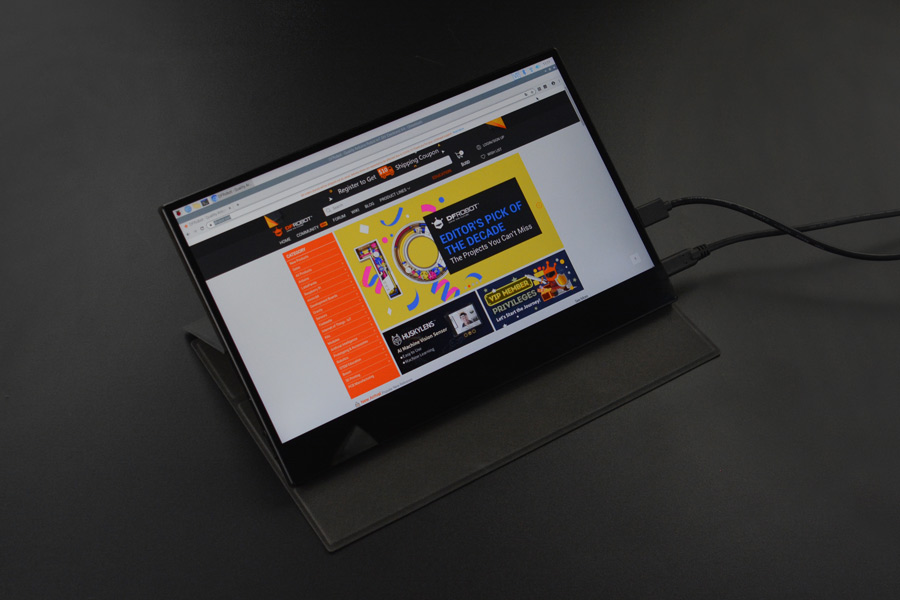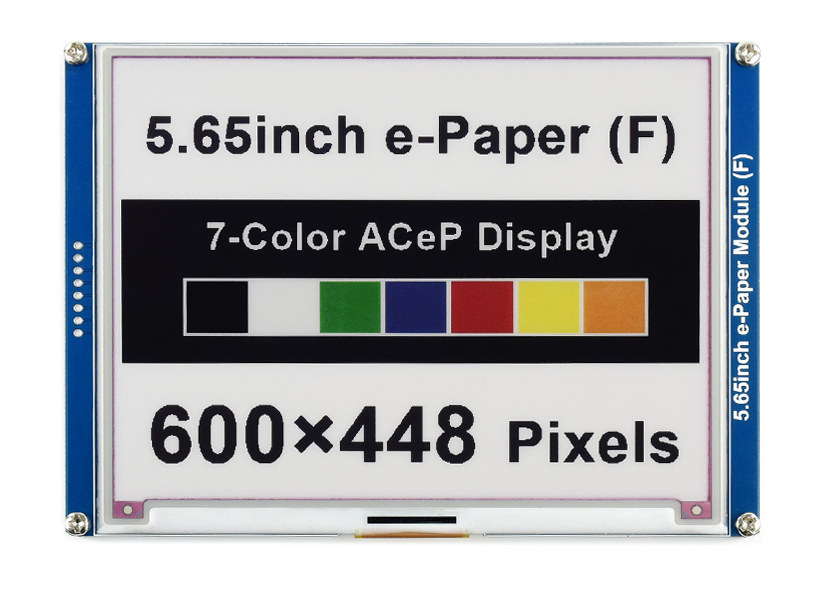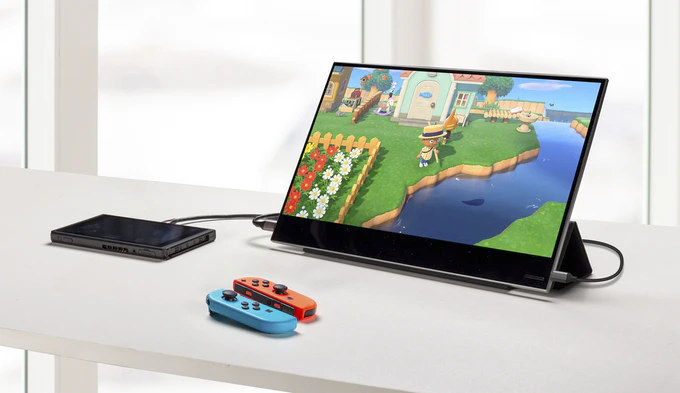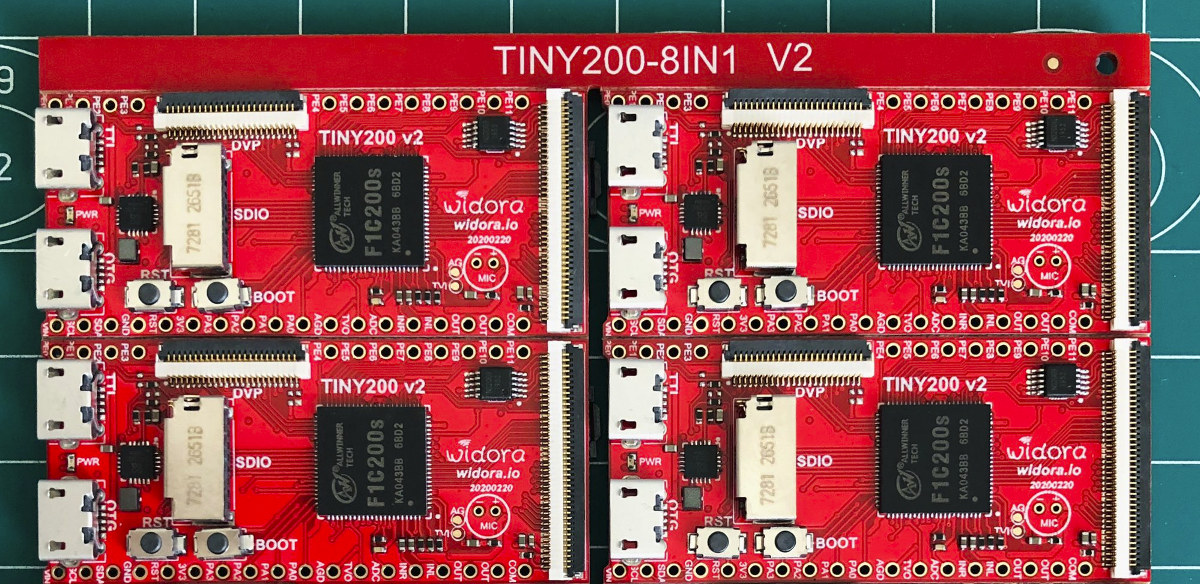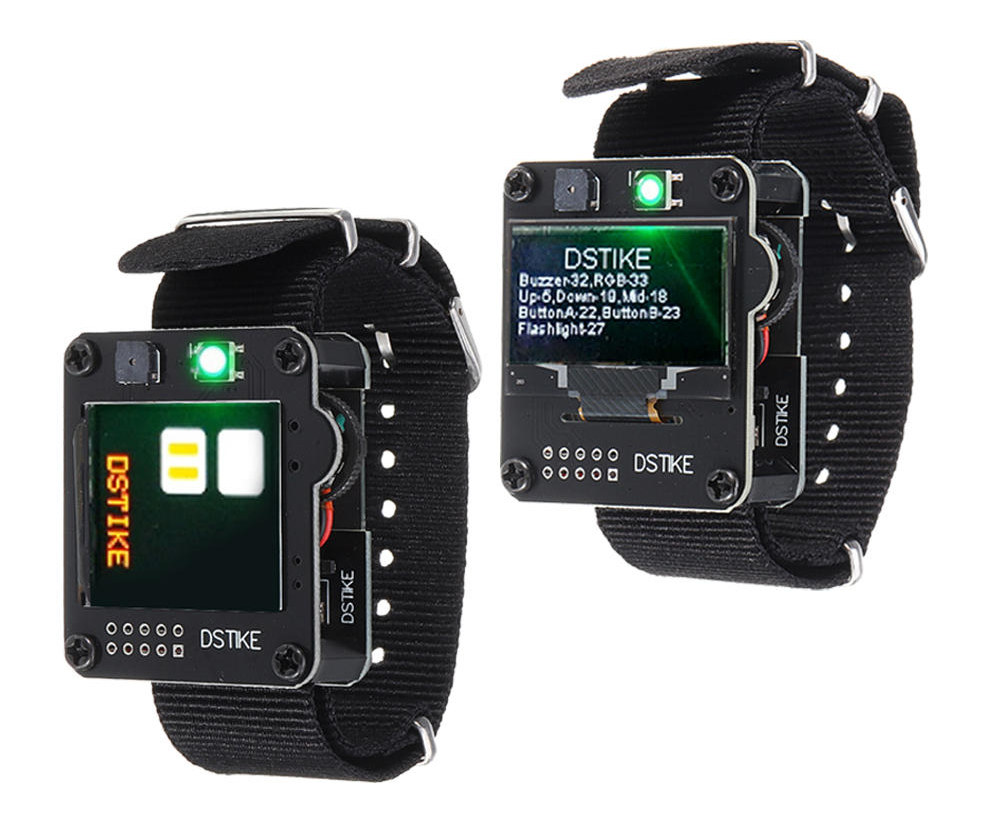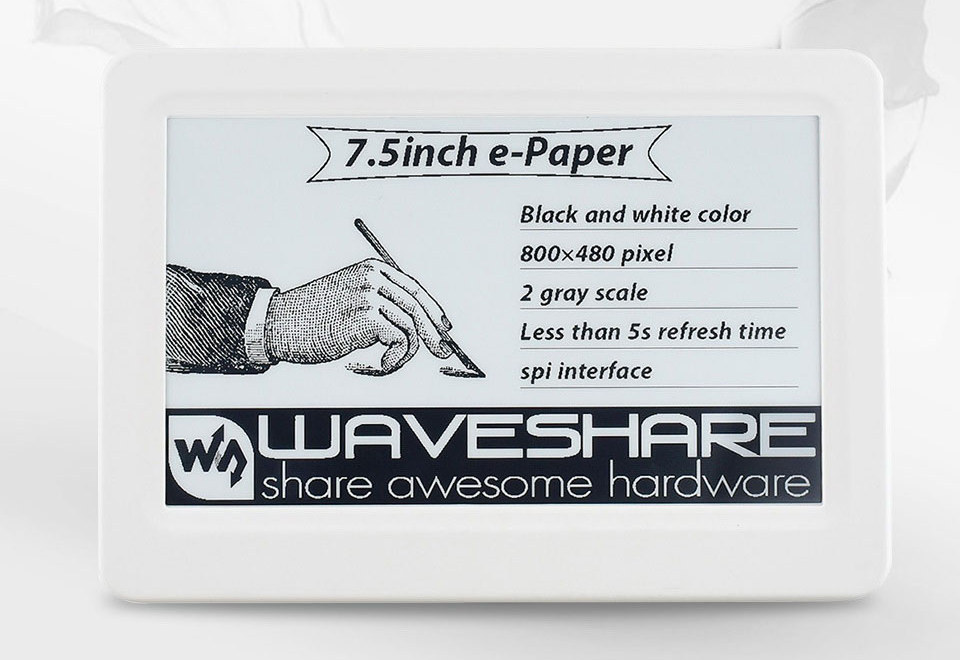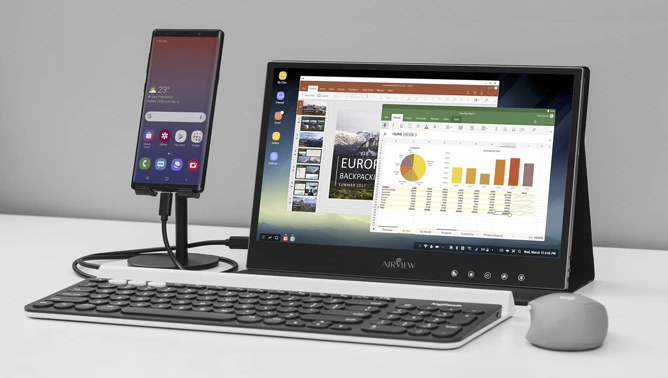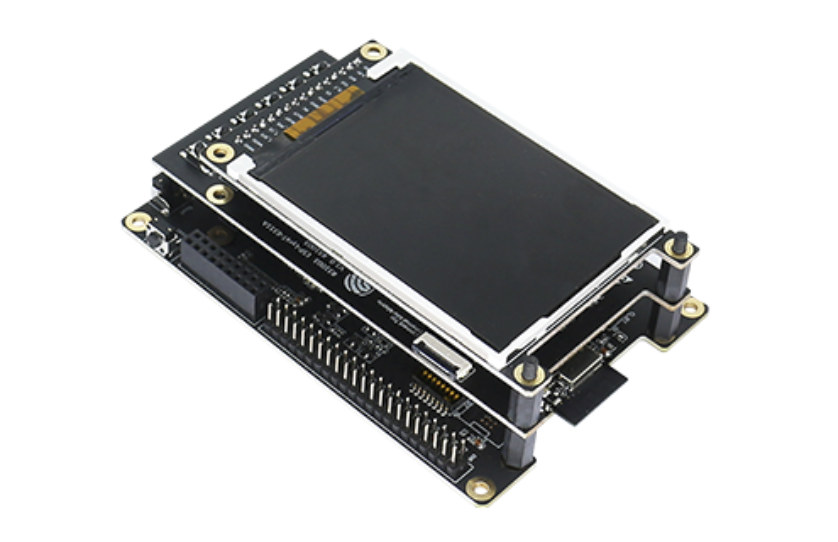There are plenty of displays for the Raspberry Pi boards, but if you are looking for a high-resolution display with capacitive multi-touchscreen it may be challenging to find. DFRobot may have what you are looking for though with a 12.5″ 4K IPS touchscreen display. The company says it’s compatible with Raspberry Pi 4B SBC, but since it comes with a mini HDMI input port, it should really work with any 4K capable SBC’s or computers. Key features & specifications: 12.5-inch IPS Pro display with 4K UHD (3840×2160) resolution, 60 Hz refresh rate, HDR, 10-point touch 100% Color gamut, 400cd/㎡ brightness, 178° viewing angle Video Input – Mini HDMI input Audio – Built-in left and right loudspeaker, 3.5mm audio jack (output) USB – 2x USB Type-C ports both supporting touch/data and power Misc – Function menu button, power LED, power button Power Supply – Via USB-C port (USB-PD supported) Dimensions – […]
Waveshare Launches an Affordable 7-Color e-Paper Display
Most e-paper displays are black or white with sometimes red or yellow color being added to the mix. But E-Ink has recently launched several color e-Paper display at prices that will not make it affordable to most projects. Waveshare has launched its fair share of e-Paper displays in the past, and now the company is coming with a relatively affordable 5.65″ color e-Paper display with seven different colors for $74.99 plus shipping. Main features and specifications: Display 5.65″ display (114.9 × 85.8mm) Resolution – 600 × 448 pixels Viewing angle – >170° ACeP (Advanced Color ePaper) 7-color with black, white, green, blue, red, yellow, and orange Greyscale – 2 levels Full refresh time – 15s Dot pitch – 0.1915 × 0.1915mm Host Interface – 3-wire SPI or 4-wire SPI Operating voltage – 3.3V/5V Power Consumption 50mW (typ.) during refresh Standby current – <0.01uA (almost none) Dimensions – Board – 138.5 […]
AirTab 15.6″ Portable Display Provides 2x USB-C Inputs (Crowdfunding)
While portable displays have been available as far back as at least 2012, they’ve become more popular in recent years as they can both offer a secondary display to your laptop, or add a larger screen to your smartphone. In the last two years, we’ve already covered BlitzWolf BW-PCM1, T-bao T15A, TAIHE Gemini (which ended up being a failure), Airview, and Desklab among others. But apparently, there’s room for more with the launch of AirTab, a 15.6″ portable touchscreen or non-touch monitor, on Kickstarter that’s already surpassed its $10,000 funding target. AirTab specifications: 15.6″ display with 1920×1080 resolution up to 60 Hz refresh rate; 4ms response time; 256 cd/m2 brightness Touchscreen – Air Touch model only USB – 2x USB-C ports Power Supply – Dimensions – 335 x 245 x 4.9 mm Weight – 500 grams AirTab comes with a foldable magnetic cover that allows the display to be used […]
Widora TINY200 Allwinner F1C200s ARM9 Development Board Supports DVP Camera, Up to 512MB SD NAND Flash
Widora TINY200 is a tiny ARM9 development board equipped with Allwinner F1C200s with a DVP camera interface compatible with OV2640 / 5640 sensor, an audio amplifier, and various storage options from a 16MB SPI flash to a 512MB SD NAND flash. I first heard about the processor when I wrote about Microchip SAM9X60 ARM9 SoC last month, and some people noted there were other fairly new ARM9 SoCs around such as Allwinner F1C200s that also includes 64MB RAM so you can run Linux without having to connect external memory chips. Widora TINY200 V2 specifications: SoC – Allwinner F1C200s ARM926EJS processor @ 400-600 MHz (Overclockable to 900 MHz) with 64MB DDR1 RAM Storage – 16MB SPI NOR flash or 128MB NAND flash and MicroSD card slot or 512MB SD NAND flash. Display I/F – 40-pin RGB FPC cable for resistive touch screens; additional 6-pin FPC cable for capacitive touch support Camera […]
DSTIKE ESP32 Watch Development Board Comes with OLED or TFT Display
In recent months several Espressif ESP32 watches have started to show up including TTGO-T wristband and Watchy with an e-Ink display. This morning, I’ve come across another option with DSTIKE ESP32 watch development kit that offers a choice of black & white OLED display or color TFT display, and has apparently been around for about a year. DSTIKE ESP32 watch devkit specifications: SoC – ESP32 dual-core Tensilica LX6 processor with Wi-Fi 4 and Bluetooth 5.0/5.1 connectivity Storage – MicroSD card Display (one or the other) 1.3 OLED I2C display (SH1106) TFT color display with 240 x 240 resolution (I2C + 2 I/O) Expansion – 10-pin header with TX/RX, GPIO 17 & 16 (I2C), SVP/SVN, GPIO 25 & 26 (DAC), GND, and 3V Misc – Power switch, navigation buttons, reset & flash buttons, buzzer, WS2812b RGB LED, “highlight LED” (backlight LED maybe), charging status LED Battery – 600 mAh battery Dimensions […]
4.2″ and 7.5″ NFC-powered e-Paper Displays Work without Battery
e-Paper displays have great readability under sunlight, and only consume power when updated. But their refresh rate is limited, and most displays are fairly expensive. One way to reduce the cost is to completely remove the battery from the display, and update it through NFC providing both data and power. I’ve just found out about that possibility through 4.2″ and 7.5″ displays offered by Waveshare. All you need is a compatible NFC smartphone, or the company’s ST25R3911B NFC Board to power the display and transfer your image of choice. This works best for signs you may need to infrequently update such as menus, daily schedules, conference badges, labels, etc… Waveshare NFC-powered e-Paper display key features and specifications: Screens 7.5″ display 800×480 resolution 2-level greyscale 170° viewing angle Refresh Time – 5s + data transfer time 4.2″ display 400×300 resolution 2-level greyscale 170° viewing angle Refresh Time – 4s + data […]
AirView Wireless Touchscreen Display Works with Phones, Laptops, Raspberry Pi, Etc. (Crowdfunding)
We’ve already written about several displays that take USB-C, HDMI or/and WiFi inputs to add a monitor to phones or computers including DUO add-on display and LAPSCREEN. AirView is another one of those and has launched on Kickstarter with a 13.3″ and 15.6″ Full HD versions featuring a touchscreen, built-in Miracast & AirPlay support, as well as HDMI and USB-C ports. It works with Android/iOS phones, traditional laptops & computers, SBC’s such as Raspberry Pi, and even game consoles. Two Airview models are available with the following hardware specifications: 15.6-inch model 1920×1080 resolution @ 60 Hz (4K model planned, but not available in KS) IPS display Multi-touch support Brightness – 250cd/m2 SRGB gamut – 98% Dimensions – 352 x 228 x 9.4 mm Weight – 1080 grams 13.3-inch model 1920×1080 resolution @ 60 Hz IPS display Multi-touch support Brightness – 300cd/m2 SRGB gamut – 100% Dimensions – 310 x 200 […]
ESP32-S2-Kaluga-1 “Multimedia” Development Board Comes with Touchscreen Display & Camera
ESP32-S2 secure WiFi processor based on Xtensa LX7 core was first unveiled in May 2019, before the datasheet was released, and the first development boards were showcased in September. The Coronavirus outbreak slowed down progress, but the company has now announced the start of mass production for ESP32-S2 SoC, ESP32-S2-WROVER & ESP32-S2-WROOM modules, and ESP32-S2-Saola-1 development board. So that means we should soon be able to buy any of those. Apart from improved security, ESP32-S2 chip also provides a USB OTG interface and interfaces for HMI (Human Machine Interface) solutions thanks to LCD & camera interfaces. So that’s probably why the company has developed ESP-S2 Kaluga-1 board with an LCD touchscreen display, touch panel, support for camera image acquisition, audio playback, and more. We do not have the full specifications at this stage, but here are some of the highlights of the board: LCD interfaces – SPI interface or 8-/16-/24-bit […]


